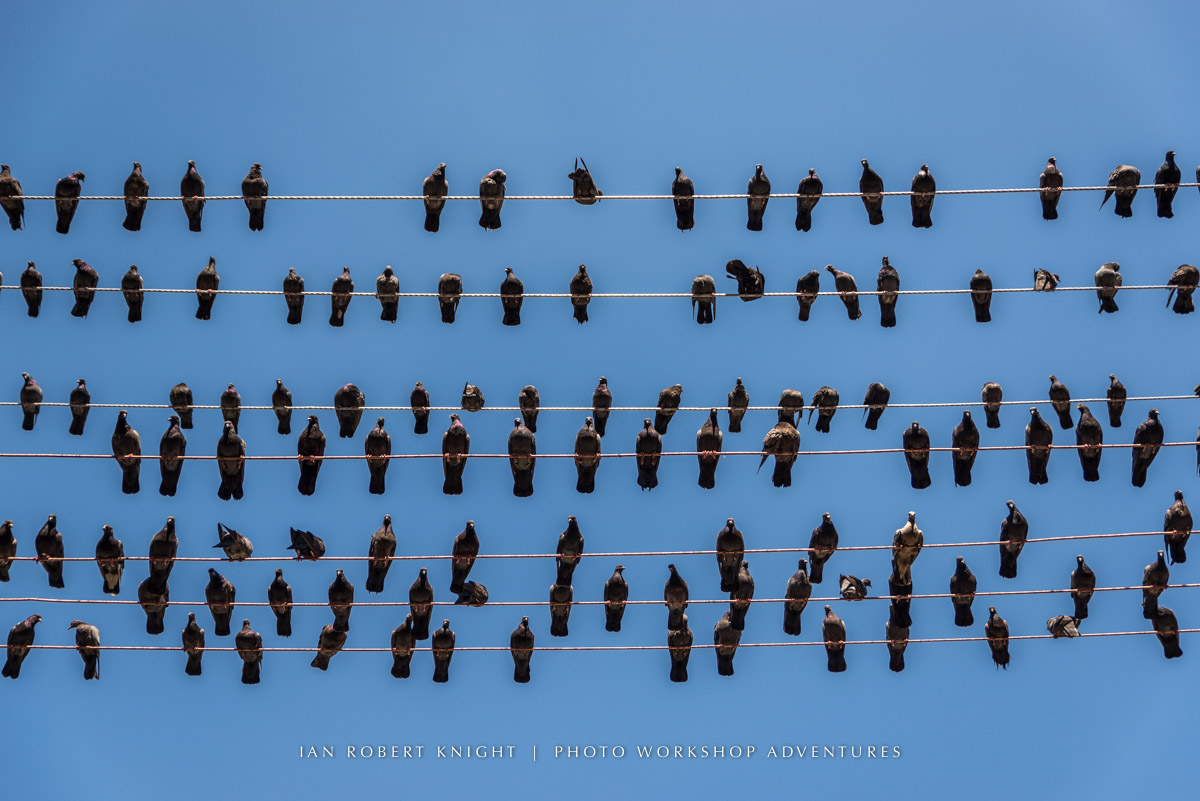USING REPETITION IN COMPOSITION
By Ian Robert Knight
Photographers learn new techniques to become better at their crafts all the time. For some photographers, myself included, we never stop learning. New ideas or technologies catch our attention constantly. New equipment make promises to improve our work.
But often, perfecting things we already know can yield better results. Improving our composition is a good example of this. One of my favourite techniques is using repetition in composition. Let me explain why.
We all know about common composition techniques. Even if we don’t consciously notice them in our work, they often appear anonymously. Most photographers use a composition style called the “Rule of Thirds”. I use it because it works.
But it’s not just used in photography composition. It has also been used in art and design throughout history. But it isn’t always the best design choice for every image. Sometimes compositions are right in front of us in nature. All we need to do is to learn to see them.
Repetition is everywhere
Repetition is one of those natural compositions. When you know what to look for, you’ll be surprised how much it occurs around us. It occurs either naturally, or man-made.
Repetitions will appear in simple things like lines or objects. And sometimes it will be more complex like patterns. But they exist everywhere. Using repetition in composition is easy, because most of the work is already done for you.
Repetition in design is like rhythm in music. There is comfort in having a pattern that repeats itself. It’s visually pleasing (or audibly pleasing). As we look at a photograph, our brains process the patterns. It can recognize when items are repeated again and again.
Our brains subconsciously count the items. It tries to put them into groups of items or colours or shapes. But as it does this, we stop, even briefly, to process what we see in the image.
And as a photographer, that’s what I want my viewers to do.
So how do we see repetition?
Patterns that occur in nature will be harder to spot, compared to man-made patterns. For natural patterns, you must look more closely at items, in detail.
Some patterns won’t be visible when the subject matter is looked at from too far away. Things like stripes on zebras. And grooves on rocks or sand. Or leaves on ferns. It becomes easy to see natural patterns when you look closely.
Man-made patterns will be more visible, because they were created on purpose. They have repeated colours or shapes laid out in patterns. The patterns and shapes can be seen even at a distance.
Some of the easiest places to find patterns would be in markets and architecture. In markets, shopkeepers lay out their products in eye-catching patterns. Often it will be organized by colour or material. In architecture and design, buildings use patterns and colours to be more visually appealing.
Keep it equal
When you see a pattern that you want to photograph, it’s important that you choose your settings carefully. When possible, it is best to photograph the subject on an equal plane. That is – make sure your camera is flat to the subject, rather than at an angle. This will help to make everything remains in focus. If the subject has no depth to it, then any aperture and shutter speed combination will work.
If the camera is at an angle to the subject, then the technique would be different. Then, you must use a small aperture to ensure maximum depth of field. This will ensure that everything is in focus from front to back. It may be useful to use a tripod In this situation.
Start looking for those patterns and repetitions. When you look for them on purpose, it will be surprising just how often you see them. Look from a distance and look close up. Add it to your routine and soon you will begin to see a pattern!
This post also appears on Ian Robert Knight’s blog “Been There, Shot That”.
May all who come as guests… leave as friends®









